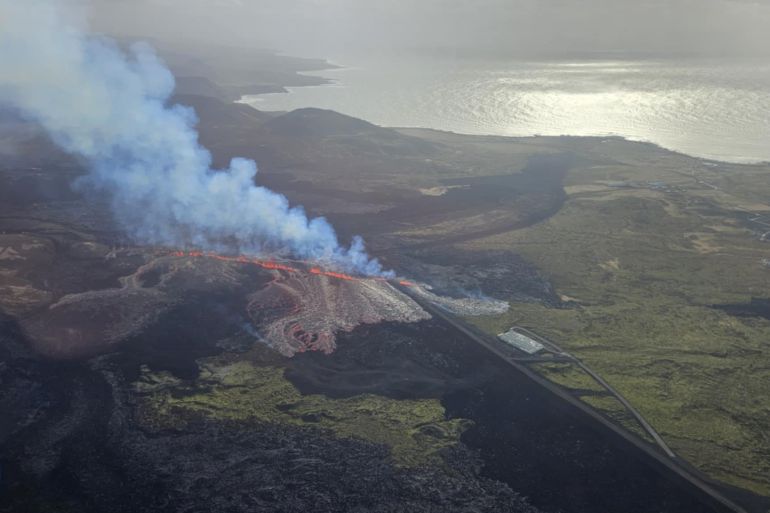Iceland volcano erupts, forcing tourists and residents to evacuate
Lava penetrates protective barriers near Grindavik, a fishing town on a southwestern peninsula also evacuated last year.

Published On 1 Apr 20251 Apr 2025
A volcano has erupted south of Iceland’s capital, Reykjavik, spewing lava and smoke in a fiery display that had earlier triggered the evacuation of tourists and residents although air traffic continued as normal.
“Warning: An eruption has begun,” the Icelandic Meteorological Office said in a statement on Tuesday. “The total length of the eruptive fissure is now about 1,200 metres (3,937 feet) and continues to extend southward.”
Recommended Stories
list of 3 itemsend of list
Referred to as a land of ice and fire for its many glaciers and volcanoes, the nation has now seen 11 eruptions south of the capital since 2021 when dormant geological systems reactivated after about 800 years.
Iceland sits above a volcanic hotspot in the North Atlantic. The most disruptive incident in recent times was the 2010 eruption of the Eyjafjallajokull volcano, which sent huge clouds of ash into the atmosphere and disrupted transatlantic air travel for months.
The eruption on the Reykjanes peninsula on Tuesday so far has not directly affected Reykjavik and has not caused significant dispersal of ash into the stratosphere, avoiding air traffic disruptions.
Advertisement
The eruption penetrated protective barriers close to the fishing town of Grindavik, forcing an evacuation of its residents, who had returned after previous eruptions, although most houses have stood empty for more than a year.
“There is lava coming within the barrier at the moment, but it’s a very limited eruption so far,” said Rikke Pedersen, head of the Nordic Volcanological Center.
Emergency services also evacuated the nearby Blue Lagoon luxury spa in the hours before the eruption after geologists warned it was imminent.
Pedersen said it was similar in size to one from January 2024, which unleashed lava into Grindavik.
Icelandic experts predicted that the so-called fissure eruptions, characterised by lava flowing out of long cracks in the Earth’s crust rather than a single volcanic opening, could repeat themselves for decades or even centuries.
The North Atlantic island, home to nearly 400,000 people, attracts thousands of tourists every year who come to explore its rugged landscape, geysers, hot springs and volcanoes.
